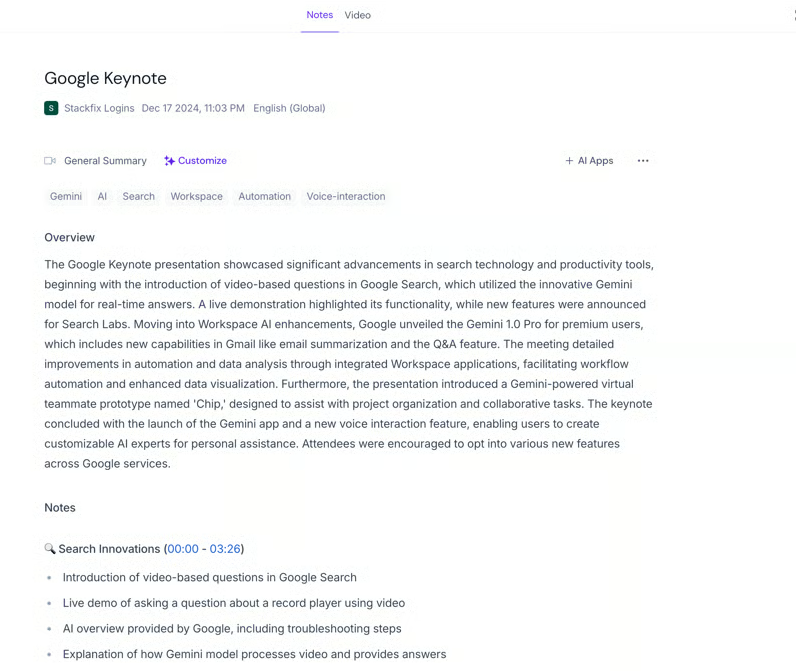INSIGHTS | Team Strategy
Construction Margins Aren’t Lost in the Math.
They’re Lost in Conversation.
By Josh Brown, Brain Bridge CEO
Published July 15, 2025
TOPLINE
Construction margins don’t disappear because of bad math in Excel spreadsheets. They disappear in conversations no one remembers, decisions no one documents, and handoffs no one owns.
What teams really need is a project-connected memory: one that captures what mattered in every conversation, and turns it into structured, searchable, job-connected context.
With a Core Memory System built around your company’s unique proposal and estimation workflows, the entire team from sales to estimator to PM can search what was said, clarify what was agreed to, and make smarter judgment calls. The result? Less confusion, better handoffs, fewer surprises, and margins that hold from kickoff to closeout.
That’s what stops the slow bleed. Catching that $5,000 scope gap before it forces $20,000 in rework, $15,000 in rushed materials, and a $10,000 hit to your credibility on the next job.
In construction, a shared memory isn’t just convenience. It’s literal cash.

Margins Slip Through the Cracks No One Sees
Ask most construction teams why a project lost margin, and you’ll hear about material price hikes, sub delays, or unexpected change orders. But those aren’t the root cause. They’re just where the problem finally shows up.
Margins usually start slipping earlier. Quietly. Right after a meeting where someone nods, someone assumes, and no one writes anything down. A scope shifts slightly. A budget contingency gets mentioned. A “we’ll figure it out later” gets left unresolved. Everyone walks away thinking it’s handled.
Three weeks later, when the question comes back: “Did we agree to that?” there’s no record, just memory. Unfortunately memory isn’t a reliable system. It’s not just about memory. It’s about lacking the tools for reliably carrying what was said through the rest of the job. These aren’t one-off mistakes. They’re systemic leaks. Not because people are careless, but because there’s no shared way to carry what was said into what actually gets built. No audit trail. No checklist. No connective tissue from the conversation to the contract.
If you want to protect margin, you have to stop it from slipping through the cracks no one’s looking at—starting with the conversations that define the job before anyone picks up a tool.
Verbal ≠ Visible. That’s Where Your Cash Leaks.
In construction, the proposal phase is where trust is won or lost. A single missed detail in scope, spec, or handshake agreement can turn a profitable job into a margin killer. You can’t solve that with more spreadsheets or scattered notes. You need infrastructure. A Core Memory System that captures what was said, what was scoped, and what still needs to be clarified.
That’s what the Brain Bridge Core Memory System does. It runs behind the scenes during bid walks, vendor calls, Zoom meetings, and internal reviews, and surfacing the details that typically disappear the minute someone hangs up. It doesn’t just record meeting. It detects when someone’s hedging on scope, when a decision goes unresolved, and prevents two people walk away with different assumptions. That’s not note-taking. That’s risk management.
- Verbal commitments don’t go undocumented.
- Scope changes don’t vanish into memory.
- Clarifications don’t die in someone’s inbox.
Your team doesn’t have to chase down emails or guess what was agreed to on last week’s walkthrough. The system keeps track of who said what so you don’t get burned by “that’s not what we discussed.” This isn’t about micromanagement. It’s about margin protection. It’s about eliminating the blind spots that lead to underbidding, change order disputes, and rework that eats your profits before a shovel hits the ground.
-
You can trace every approval back to the exact sentence.
-
You can resolve scope confusion with a single search.
-
You can onboard new team members with full project memory, not oral history.
The Core Memory System turns conversations into operational clarity so your team can estimate confidently, scope accurately, and submit proposals that actually get the best paying work.
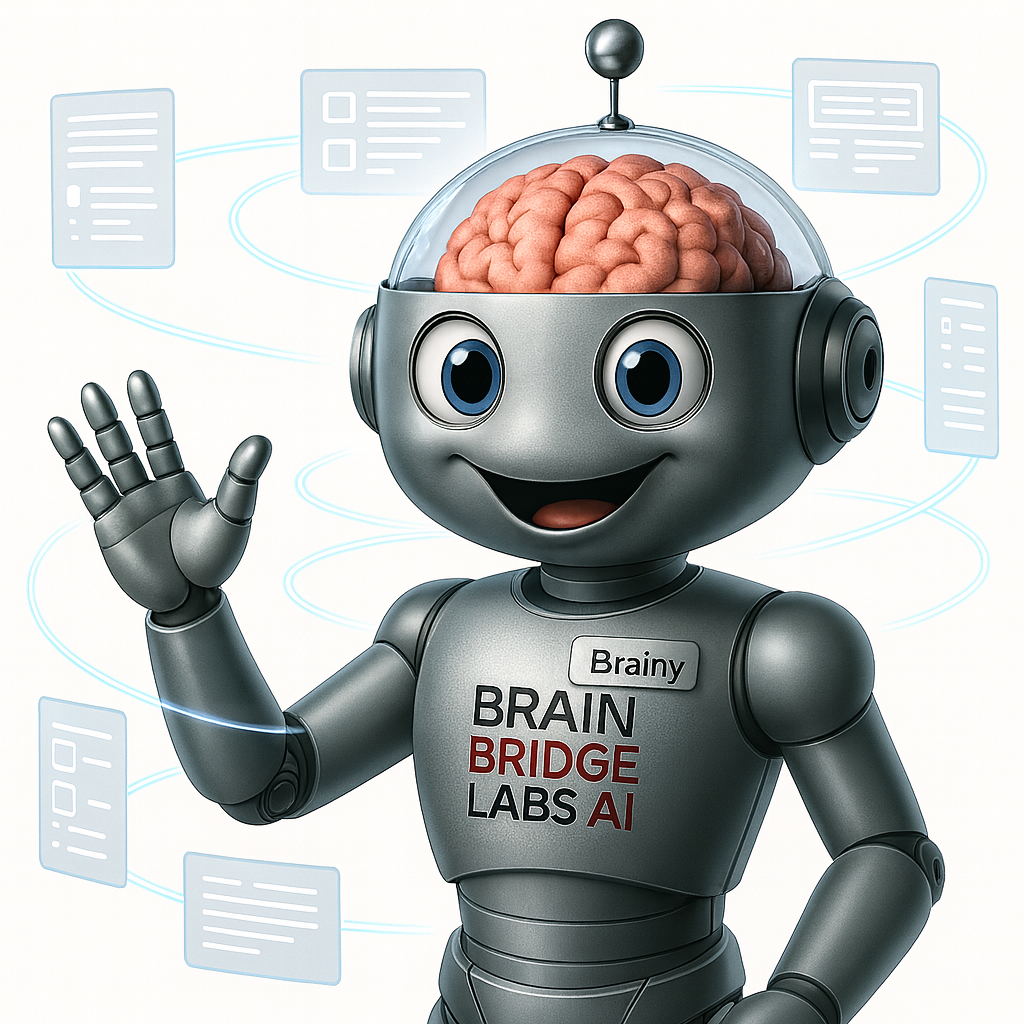
Remembering Is Not A System
When memory becomes the process, rework will be in the outcome.
The rework often costs more than the system that prevents it. Brain Bridge works with clients to build AI memory infrastructure that pays for itself fast. Core Memory captures key decisions, prevents confusion, and protects your margin from forgettable mistakes. You don’t need a bigger team. You need a better system. We’ll help you build it.
You’ve Seen the Note-Takers. They’re Not Enough.
By now, most teams have tried an AI note-taker. It joins the call, records what was said, emails a transcript… and disappears.
It looks helpful but it’s not built for the real work that follows. Note-takers can’t flag decisions that impact your scope. They don’t translate client conversations into action items. They don’t catch what your estimator missed or what your PM never heard. They just document. That’s it.
Worse, they create a dangerous illusion: that the job of remembering is handled. That somewhere, someone has it covered. Until they don’t. So teams fall back on memory, follow-up emails, and gut feel. And that’s exactly where misalignment creeps in silently, repeatedly, and at a cost. Capturing what was said isn’t enough. You need a system that knows what matters, ties it to the job, and makes it usable where it counts.
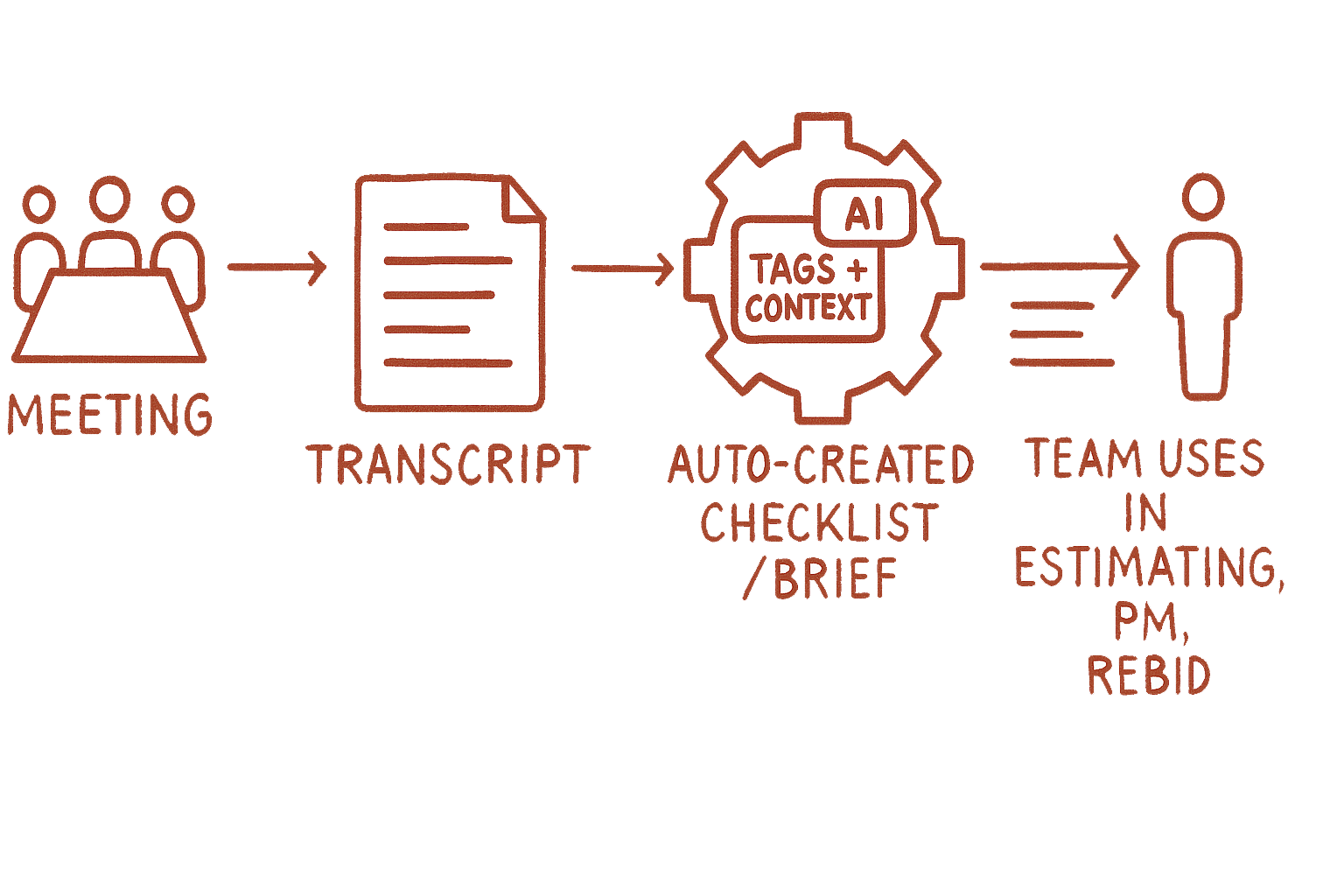
Builders Don’t Need Fancy AI Estimation Tools. They Need a Better Memory.
This isn’t about adding more apps or paperwork or tools. Most builders aren’t asking for more software. They’re asking for less chaos. They don’t need another app to manage, another dashboard to check, or another report to ignore. They need a system that remembers what they lived and turns it into something usable.
A shared project memory doesn’t just store transcripts. It captures what your team actually heard, said, and decided and connects it to the job in real time.
A purpose-built transcript system:
-
Tags open questions, verbal commitments, and unresolved assumptions
-
Translates meetings into checklists, briefs, and scope items—automatically
-
Flags inconsistencies before they become rework
-
Aligns everyone from sales, estimating, ops with access to the same version of truth
It works quietly in the background. No new logins. No “hey, did you upload that?” Just clarity that shows up where and when you need it. You don’t need more tools. You need a system that listens like your best PM, remembers like your best estimator, and makes your team smarter without making them slower.
Gut Calls Still Run the Show. Now They Come With Receipts.
No matter how tight your process is, the final call often comes down to instinct and experience. You’ve seen enough jobs to know when to pad a schedule, pull back a number, or leave room for the unknown. Those decisions matter and they happen fast.
Those gut calls get harder when the context is scattered.
When one person was in the meeting, another wasn’t, and a third half-remembers something from a phone call last Tuesday. That’s when judgment turns into guesswork. And guesswork kills margins.
With a connected transcript system, you still make the call but now it’s backed by proof. The exact conversation. The actual words. The full thread of context. Searchable, shareable, and grounded in what really happened. It’s not about replacing your instincts. It’s about giving your team a way to trust them too and move faster because of it.
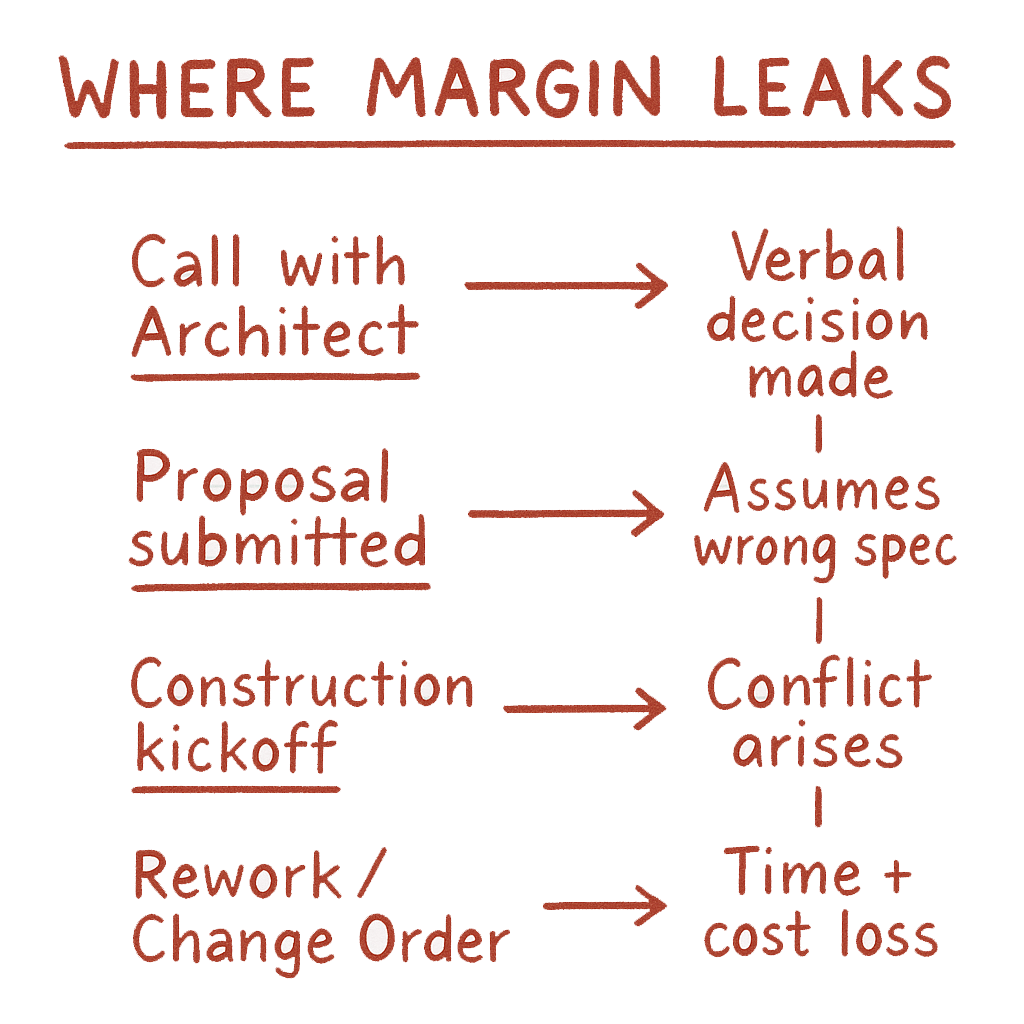
How Bids Fall Apart in the Final Stretch
The estimate’s solid. The assumptions feels tight. The proposal is 95% there. Then someone asks:
“Did we say we were including demo?”
“Was that alternate ever confirmed?”
“Did the client approve the phasing plan or were we still waiting?”
And suddenly, the bid slows to a crawl. People start digging through emails, slacking each other for notes, or worse… guessing. The team burns hours backtracking, overbuilding to be safe, or omitting something critical without realizing it.
That’s how bids fall apart. Not because the math was wrong—but because the memory was. Transcript systems fix this by transforming every project conversation into structured, searchable context. Every assumption, approval, and scope decision is already tagged, already tracked, already there.
So when it’s time to finalize the bid, you’re not scrambling for answers, you’re verifying them.
The result: fewer late nights, fewer change orders, and a bid that’s both faster and more defensible. It’s not just about being right. It’s about being sure—and making sure the whole team is too.
When Only One Person Knows, Everyone Holds the Risk.
If context lives in someone’s head, the whole system is fragile.
Projects shouldn’t fall apart when someone’s out sick. Brain Bridge can help you build a shared memory so every quote, approval, and spec is accessible when and where it matters. It’s not just about tracking. It’s about trust, speed, and protecting your margin from the next avoidable mistake.
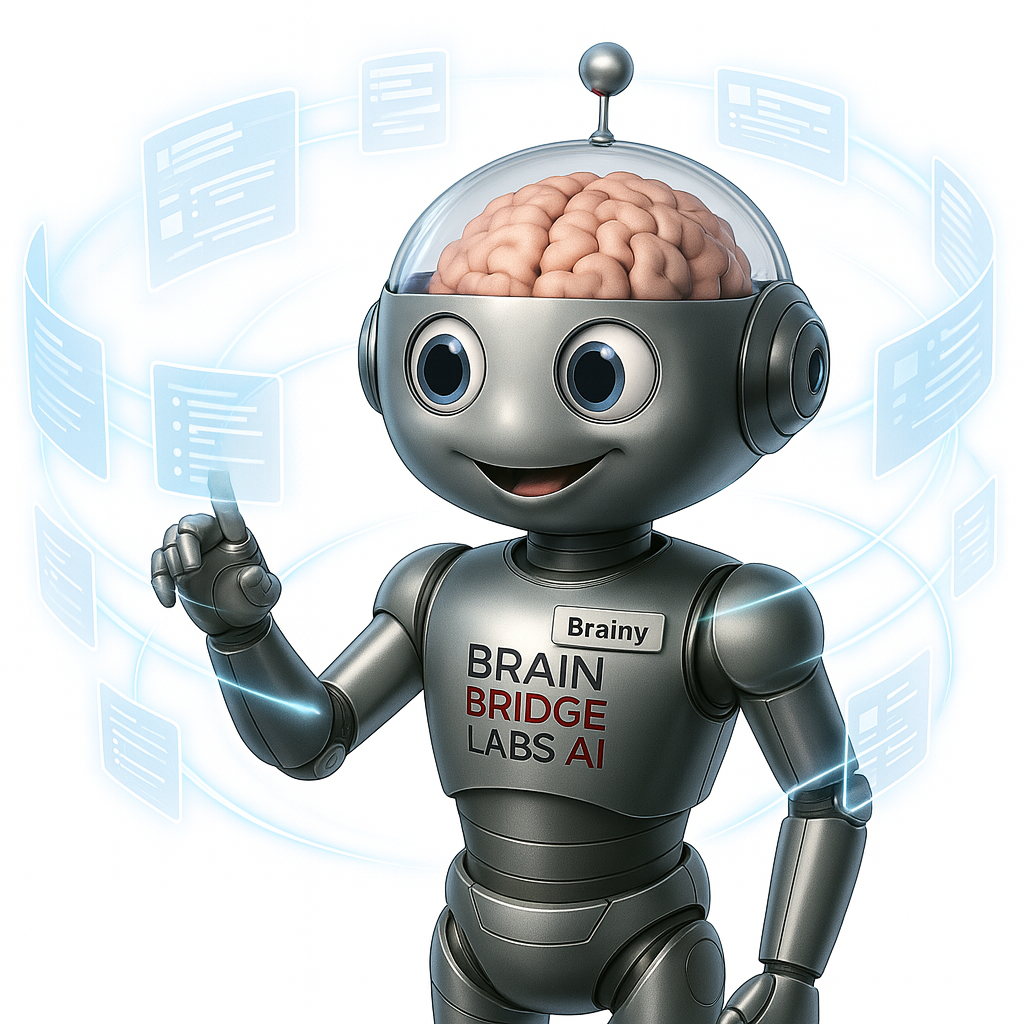
Another Friday, Another Close Call
One team caught a margin killer just in time.
They were days from submitting a 1.4 million-dollar bid when a business development specialist flagged a spec mismatch: an upgraded entryway finish that had come up on a call with the client but wasn’t written into the proposal. The project manager assumed they were being put in. The estimator didn’t remember the decision. The department head wasn’t even in the meeting.
Instead of calling a meeting, firing off emails or calling the client, the estimator searched the transcript. There it was:
“Let’s hold off on upgrades until we confirm budget on Friday.”
Their system had flagged the comment automatically as “unresolved” three months ago but nobody followed up after the budget was confirmed. It never made it into scope. This error was downgraded to a near-miss because the system caught what the humans forgot. The team was able to quickly add the granite, glass particians, lighting fixtures and doors to add another $140,000 to their bid proposal in just two hours.
A Process Add-On for Everyone Who Touches the Job
Everyone touches the job differently. Sales sets the tone. Estimators define the target. PMs own the risk. Superintendents carry it to the finish.
And too often, the thread between them frays. With transcripts embedded into your workflow (not just dumped in your inbox) everyone gets what they need, when they need it, without the back-and-forth.
-
Estimators don’t chase down meeting notes.
-
PMs start with full context on what was promised and why.
-
Leadership can audit decisions without slowing the team down.
-
Sales doesn’t have to relitigate scope two weeks before closeout.
-
Field teams don’t have to guess what someone meant four months ago.
This isn’t another system to log into. It’s a quiet layer of memory that moves with the job translating early conversations into decisions, checklists, and actions as the work moves forward. It doesn’t change how your team works. It protects how they work so nothing critical gets lost in the handoff.
Final Word: Memory Is the Most Overrated Tool in Construction
Every week, construction teams have conversations that shape scope, timelines, and expectations. These conversations are the real source of truth but they’re fragile. They drift. They get misheard. They vanish into someone’s notebook.
When it’s time to backtrack, the cost isn’t just confusion. It’s rework, overtime, blown trust, and lost margin. You don’t lose money because someone forgot everything. You lose money because no one could prove the one thing that mattered. A connected transcript system changes that. It turns talk into traceable action briefs, checklists, flags, approvals—tied directly to the job, right from the start.
No extra overhead. No new process to babysit.
Just a smarter way to carry the truth forward.
For the price of a rounding error on your next bid, you have a system that can catch a $50K mistake before it hits the floor. This isn’t about remembering more. It’s about building better.

